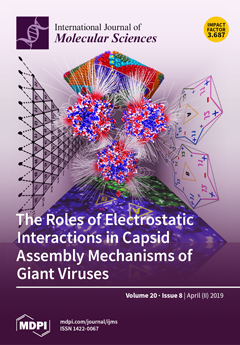We investigated whether the substrate for nitric oxide (NO) production, extracellular
l-arginine, contributes to relaxations induced by activating small (SKCa) conductance Ca
2+-activated potassium channels. In endothelial cells, acetylcholine increased
3H-
l-arginine uptake, while blocking the SKCa and the
[...] Read more.
We investigated whether the substrate for nitric oxide (NO) production, extracellular
l-arginine, contributes to relaxations induced by activating small (SKCa) conductance Ca
2+-activated potassium channels. In endothelial cells, acetylcholine increased
3H-
l-arginine uptake, while blocking the SKCa and the intermediate (IKCa) conductance Ca
2+-activated potassium channels reduced
l-arginine uptake. A blocker of the y+ transporter system,
l-lysine also blocked
3H-
l-arginine uptake. Immunostaining showed co-localization of endothelial NO synthase (eNOS), SKCa3, and the cationic amino acid transporter (CAT-1) protein of the y+ transporter system in the endothelium. An opener of SKCa channels, cyclohexyl-[2-(3,5-dimethyl-pyrazol-1-yl)-6-methyl-pyrimidin-4-yl]-amine (CyPPA) induced large currents in endothelial cells, and concentration-dependently relaxed porcine retinal arterioles. In the presence of
l-arginine, concentration-response curves for CyPPA were leftward shifted, an effect unaltered in the presence of low sodium, but blocked by
l-lysine in the retinal arterioles. Our findings suggest that SKCa channel activity regulates
l-arginine uptake through the y+ transporter system, and we propose that in vasculature affected by endothelial dysfunction,
l-arginine administration requires the targeting of additional mechanisms such as SKCa channels to restore endothelium-dependent vasodilatation.
Full article






